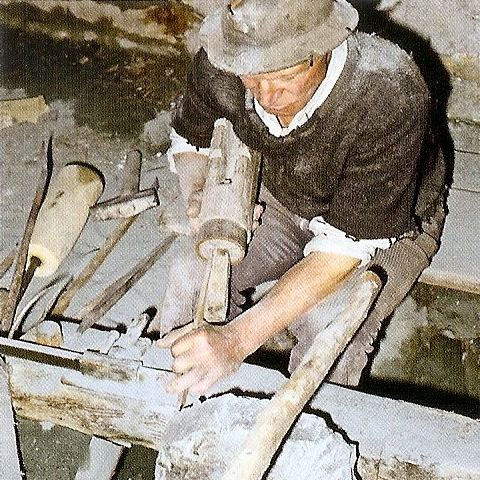 Potmaker at the lathe.
Potmaker at the lathe.
The roughly constructed drystone wall workshop
(turn), where the lathe was installed, was a very damp room due to the nearby water.
The traditional lathe for turning was built by the craftsman and was made almost entirely of wood.
The ciapùn was first flattened on the smaller base by a special hammer.
It was then heated close to the fire in order to make the resin cover it more easily and stick to the
furma, which was the truncated, conical tool, used to turn the block of stone during turning.
By working the
ciapùn on the lathe, they were able to make a series of various sized pots which, according to the size of the block and the skill of the turner could range from a minimum of 3 or 4 up to a maximum of 7 or 8.
The first pot was called
tésta, and was followed by the others, which became smaller and smaller.
When the pot was completed, rings and handles had to be added, originally of iron and now made of copper.
Some craftsmen made the circles themselves, although the majority depended on the tinsmiths in Lanzada, the
magnàn.
When turning was complete,
a small, truncated, conical piece called
pignȫ remained in the centre of the ciapùn.
It was a reject from the turning which, long ago, offered various possible uses.
If it was well heated over the fireplace, it could be used as a bed warmer, as soapstone keeps its heat for a long time.
It was used as a doorstop, in place of the hinge pin for gates and doors.
It was also used to close the draught of the old wood burners when the desired temperature had been reached.
For this use it was called
l’umin de la pigna (the little man of the stove).